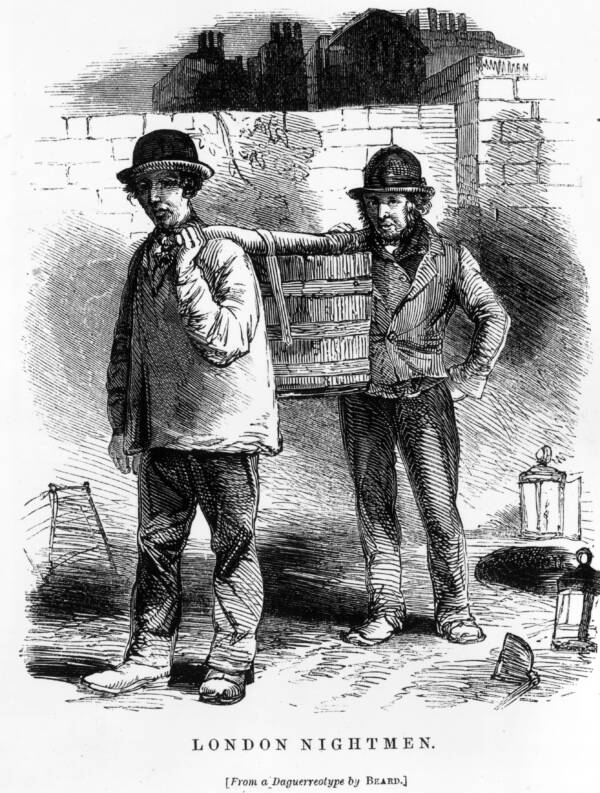How did they handle poop during the Middle Ages?
At that time, there wasn’t a modern sewage system, especially in castles, and toilets consisted of a wooden bench with a hole in the center placed on a stone where poop fell by gravity toward a cesspit, other castles instead drained stools directly into a river or from a cliff. So, toilets were similar to an outhouse before flushing toilets were invented in 1596 and became standardized in 1851.
Poop stockpiled in the cesspit needed to be removed, that’s why a new job was born during the Tudor period, they were the “nightmen” because they worked at night. From around 9 p.m. to 5 a.m., they emptied the pits and carted off the fecal matter. The “nightmen” were also called “gong farmers,” where “gong” comes from Old English for both the fecal matter and the medieval repository from the verb “going” just like “going to the toilet,” since farmers “harvested” the accumulation of months or even years of “going”. Their job consisted of digging and scraping near the walls of castles to remove poop, or “night soil”.
They emptied a castle’s cesspit every two years on average, but they also took payment for individual privies.
While some nightmen merely needed a bucket and a willing partner, others required a carriage because they had to transport tons of waste to the town boundary.
Communal outhouses outside, or “houses of easement,” were treated the same. To avoid health concerns, any rotten waste was to be removed and transported to specific dumpsites beyond a town boundary. Private privies required more frequent attention than castle cesspits, which may take years to fill.
The operation often took three or four men, with one shoveling the feces into buckets, another lifting the buckets up with a rope, and the others carrying the loads onto their cart. Because medieval sewage chutes provided a vulnerable entry point for invading armies, gong farmers were frequently required to block any intruders if possible.
Gong farmers went frequently along with young practitioners because small boys were able to easily move around these tight places due to their small size and nimble bodies. These stool farmers were also expected to clean the chutes leading into the pit in addition to cleaning the pit itself.
Sometimes precious goods such as jewels that dropped into these toilets did occasionally turn up and provide a pleasant surprise, especially during such a dirty task. In addition, gong farmers mostly relied on actual farmers who paid handsomely for the feces, which served as a wonderful natural fertilizer for their fields. The task, after all, appeared to be highly compensated.
Throughout the Middle Ages, gong farmers were paid in many ways. Two shillings (about $90 today) were the standard in the 15th century, according to historical archives. In some reports, the payment was allegedly made in pounds of candle wax, while a gong farmer for Elizabeth I was allegedly compensated with brandy.
Due to their job, gong farmers were restricted to living in certain secluded areas. Their work was exhausting, and the lack of ventilation in these cesspits did not allow reprieve during the night-long job.
By the way, we cannot forget to mention the story of Richard the Raker, a gong farmer, who died in 1325 because he fell into a cesspit and drowned during his day off.
Long after came innovation, which got rid of the nightmen of this unpleasant job thanks to indoor plumbing spreading around the world in the mid-1800s.
Source allthatsinteresting.com

